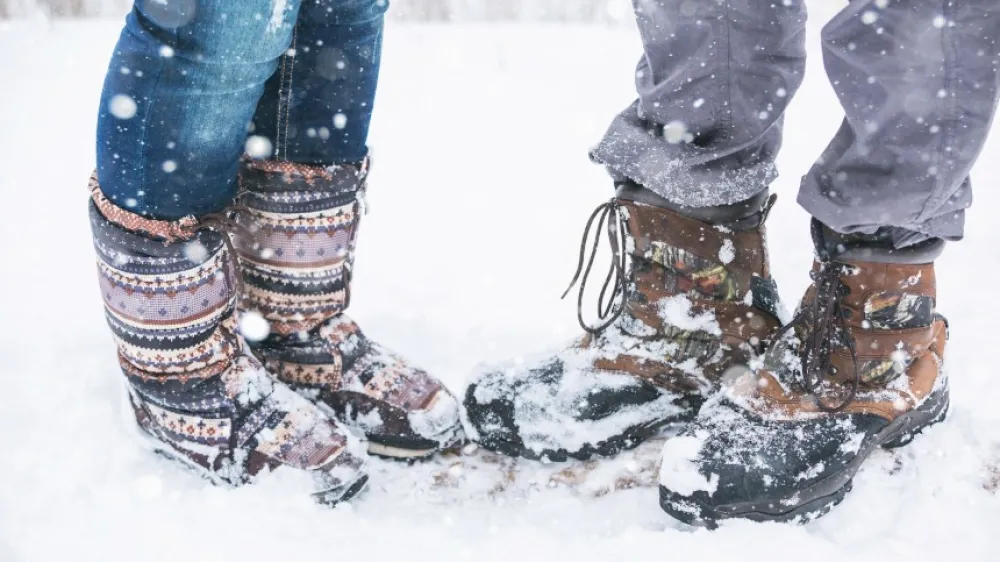Providing your location allows us to show you nearby locations and doctors.
Don't tiptoe around winter foot care

12/05/2021
Taking proper care of your feet during the colder months isn’t something you should tiptoe around.
Your feet have more than 50 bones, 60 joints and 200 muscles, tendons and ligaments. These are more susceptible to injury as the temperature drops, thanks to Jack Frost’s nip. Meanwhile, slippery walkways make your feet’s job of supporting your entire body much tougher.
Proper winter foot care starts with what you wear. Whether we like it or not, it’s time to put away the flip flops and sandals. Go with a sturdy shoe and, after snowfall, a winter boot.
This time of year is ideal for trying on last year’s winter footwear to make sure it still fits comfortably. Wiggle your toes. They shouldn’t feel too snug as tight footwear can decrease blood flow, which makes it harder to keep your feet warm and can lead to frostbite. Also, you want to make sure your foot doesn’t slide around. Movement may cause a blister, chafing or other foot injuries. If you do need to shop for new boots, wait until late in the day because feet tend to swell.
Once you have good-fitting footwear, it’s all about the socks. In order to keep your feet dry, choose wool socks, which wick away moisture produced by the 250,000 sweat glands in your feet. Synthetic materials can cause your feet to sweat while cotton absorbs sweat but dries slowly. You can also use a little foot or baby powder in your socks to aid in sweat absorption.
If you have a medical condition such as diabetes there are added risks. Even if you wear fitted heavy boots and wool socks, you may not be able to feel the cold, numbness and pain associated with poor circulation that leads to icy toes and frostbite. Limit your outdoor exposure and follow my last tip closely.
Don’t forget foot maintenance and daily examinations, especially for diabetics. Treat your feet to the same pampering as you would during sandal weather, only the nail polish can be optional. Regular maintenance such as clipping your nails prevents blisters. Washing and drying your feet prevents fungal infections. A foot scrub helps stimulate circulation. Moisturizing heels and feet, especially dry areas, after bathing prevents the skin from cracking, a source of infection.
It doesn’t matter if you keep your feet hidden in slippers indoors and boots outdoors all winter long. Avoid spending the season off your feet by getting proactive about their health. They will return the favor.
Dr. John Zboinski is the Medical Director of The Wound Care Center at Northern Dutchess Hospital. He is also a licensed podiatrist at Rhinebeck Foot and Ankle Care. Speak to your doctor about a referral for wound care services or call our Wound Care Center at 845-876-3388 (TTY 800-421-1220) for information.